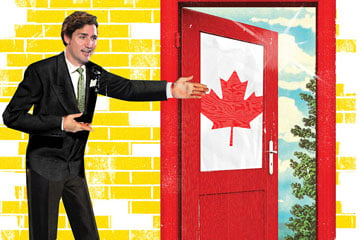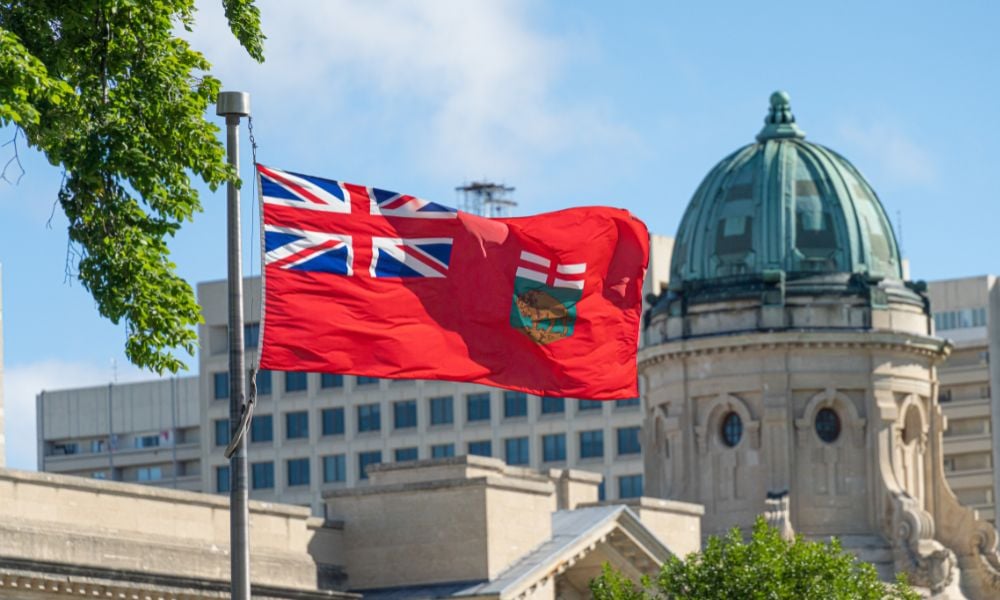Lawyers are cautiously optimistic that the Liberals can continue their positive momentum. Beginning in early March, Immigration, Refugees and Citizenship Canada began accepting up to 2,000 permanent resident applications under the new Atlantic Immigration Pilot.

Beginning in early March, Immigration, Refugees and Citizenship Canada began accepting up to 2,000 permanent resident applications under the new Atlantic Immigration Pilot.
“It’s an innovative first,” says Suzanne Rix, a partner at Cox & Palmer’s Halifax office, of the three-year pilot program. “We have some high hopes.”
Under the pilot, the federal and provincial governments of the Atlantic provinces will work together with employers in the Atlantic region. Businesses can offer employment to foreign workers with the requirement that they help the worker settle, and the federal government has committed to processing applications for permanent residency in six to 12 months.
The pilot is part of the federal government’s shift toward a more welcoming immigration stance. When Prime Minister Justin Trudeau was campaigning, changes to immigration policy formed a large part of his platform, and since taking office in 2015, there have been some notable changes, with more expected.
Rix says one gets the impression the Trudeau government is trying to be transparent and open. “Are they perfect, no, but do they represent the values of the majority of Canadians? I think yes,” she says.
For Mario Bellissimo, of Bellissimo Law Group in Toronto, one of the biggest changes was the “new normal” for the number of immigrants Canada will take in this year — the highest level since 1913.
“We are an aging country — a high percentage of our population is over the age of 50. There’s no question Canada’s demographics absolutely demand a serious infusion of immigrants,” he says of the hike to 300,000 from 250,000.
But there has to be a corresponding resource allocation, he says, adding that the government is hoping the increasing rollout of modernization and automation will make processing applications faster.
Kevin Zemp, of Zemp Law Group in Calgary, Alta., says a lot depends on how the number is broken down.
Take the increase to 10,000 from 5,000 for the parent/grandparent program — there’s an economic cost to that. As elderly people, they’re “probably not going to contribute as much to the tax base as they’re going to consume in health-care expenses.
“I support it, but if you just look at some of the financial considerations, some people would say that’s a terrible thing because that’s going to cost us hundreds of millions of dollars,” he says.
The method for selection of parent/grandparent applications has been changed to a lottery, which ran for the month of January. Zemp says he has mixed feelings because, under the previous system, his clients were always able to beat the cap.
“We’d hire a courier and have him sit there at four in the morning and wait until the door opened so we could get our people in,” Zemp says. “If you knew the rules and how to play the game, you could get your people processed. If you were the average Canadian who thought I’ll just send it in by courier and it’ll arrive that day and everything will be fine, not so much.”
Despite it being a more fair process, there are reservations.
“Through the Canadian Bar Association immigration law section, I saw people commenting they don’t think this lottery system is going to work as anticipated,” Rix says. “Just because you get selected doesn’t mean you’re going to provide a complete application that can be accepted or that the sponsor qualifies. Does that number go back into the lottery? I don’t think it’s been made clear — maybe the government doesn’t even know yet because it’s too new.”
Bellissimo says he appreciates something had to be done because of the demand, but his concern is transparency. How are people selected? Is it completely random? Is there further vetting? It has to be equitable, he says. He would also like to see it run year-round.
The Liberal’s platform also proposed doubling the budget for family class immigration to reduce processing time to less than a year.
“It’s going to be very interesting to see if they have the resources and the automation can actually match what they’re promising because processing times just became unconscionable — you cannot keep families apart that long,” Bellissimo says.
A highly anticipated change for family class immigration is increasing the age of dependence to 22 from 18. Zemp calls the current limit “heart-rending,” saying if you have a child that’s 20 or 21 in university, to come to Canada, “you just have to wave goodbye and wish them luck.”
Despite announcing the change, it’s not going to take effect immediately, something Zemp calls “utterly bizarre.
“If that’s a policy you want to change, what is it about it that requires you to wait a year-and-a-half or so before you implement it?”
In November 2016, changes to the Express Entry Program were also made. The changes reduced the points awarded for holding an LMIA with an offer of employment and allocated additional points for graduates of some post-secondary programs in Canada. The definition of offer of employment was also broadened.
Bellissimo says the program was designed as “an onshore landing program” aimed at giving students and workers already adjusted to and doing well in Canada the chance to become permanent residents. But now, there isn’t such a “total reliance” on a work permit or schooling — a person wanting to immigrate can get points for having brothers or sisters already here, for example.
“I think they’re going to continue to find ways to make getting work permits and LMIAs for these foreign nationals easier,” Bellissimo predicts. “They’re really trying to make it more equitable, but it’s moving targets and a delicate tapestry. It’s difficult to weave it all together.”
Rix says her issue with the new system is that it can give people false hope if they are accepted into the pool but don’t have enough points to get an offer to apply, while Zemp says it “reduces the variety of people you can bring in.”
Zemp is waiting for promised changes to the LMIA process, hoping they’ll make it “a little more responsive to business reality.”
The challenge in Alberta particularly, he says, is that in good times they’re waiting six to eight months to get one approved, a “significant blow to business,” and even with a bad economy, it’s still taking four to five months.
“Then we’ve got to apply, in many cases, for Visas, and that can take two or three or more months. I don’t know any healthy labour market that can wait that long to fill a position,” Zemp says, noting that Service Canada managed to improve times in Ontario and Eastern Canada. “I don’t know why the government thinks serious delays in filling a recognized labour shortage is an acceptable state of affairs.”
Changes to the Citizenship Act are in the works through Bill C-6, which passed second reading in the Senate and was sent to committee. Among other amendments, the Liberals are changing the requirements for how long a person has to live in Canada before becoming eligible for permanent residence to three out of five years — making it easier than the original three out of four, which is what it was until the Conservatives changed it to four out of six, Rix says. Part of the time spent as a temporary resident will also count toward this requirement, she adds.
This is another move toward a pro-temporary foreign worker environment, Bellissimo says, adding that although it was “a controversial and arbitrary rule” best done away with, “optically, it played well to the politics to say either they’re immigrants who are staying or they’re workers who are moving on.”
They are also looking at two-week processing times for high-skilled workers, which is “an indication of trying to make Canada more competitive globally in terms of retaining key workers and making their admission smoother,” Bellissimo says.
One of the most publicized parts of Trudeau’s platform was his pledge to accept 25,000 Syrian refugees by February 2016, which was then upped to 50,000 by the end of 2016.
Bellissimo says the refugee issue is “becoming a powder keg for the government” and hopes it ensures that, despite political pressure and global trends, Canada continues to process refugees as it has been.
“Not becoming susceptible to all the noise will be the most difficult challenge going forward,” Bellissimo says. “We’re one incident away from that generosity being compromised so it’s very delicate.”
For 2017, a cap on refugee applications for private sponsorship was implemented.
“The fact they had to set one is remarkable,” says Zemp of the 1,000 cap. “It shows there was enough demand for private Canadians to sponsor refugees they were afraid it could overwhelm part of the system.”
Overall, despite some “tough economic realities,” Canada has the opportunity to “bring in the very best and brightest we’ve ever had,” he says. Though the United States has been “a powerful magnet,” concerns with the current administration may mean more immigrants choose Canada.
“When people think, where do I want my children to grow up, I think you compare the executive order out of the States with Trudeau’s comments of the shootings in the mosque — it’s just so diametrically opposite, the message going out to the world,” Zemp says.
“We have a long way to go before we’re the type of society we want to be, but there’s a greater perception that we’re trying,” he adds.
Bellissimo agrees that things are complicated by “the winds from the south” and what he calls a “bit of an anti-immigration feel going on there.” He says he’s seen more people reaching out for assistance since Donald Trump took office. Also, former minister of Immigration, Refugees and Citizenship John McCallum, who was “a steady hand, a veteran,” left his post on Jan. 10 and was replaced by Ahmed Hussen, who immigrated from Somalia in 1993.
“It’s an interesting collection of circumstances,” Bellissimo says. “I think the way this began, with the mandate letter Trudeau issued, it had a good feel from the beginning. Some people argue it’s an impossible wish list and inevitably there’s going to be disappointment, but I think they have attempted to make good on their promises, obviously with world events intervening, and now we’ll see what the new minister can do and how he moves it forward.”







